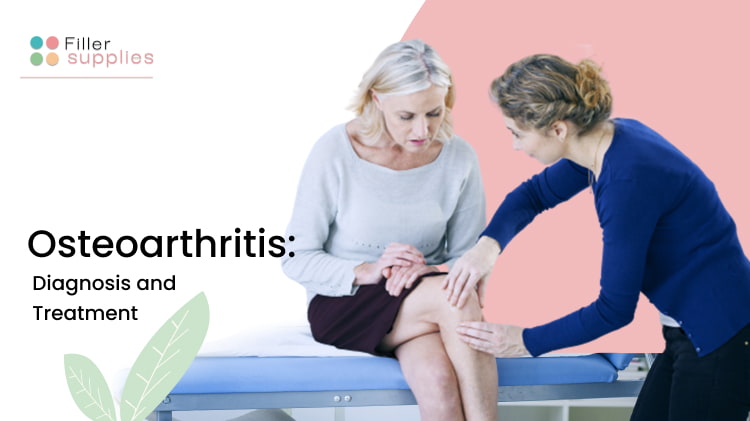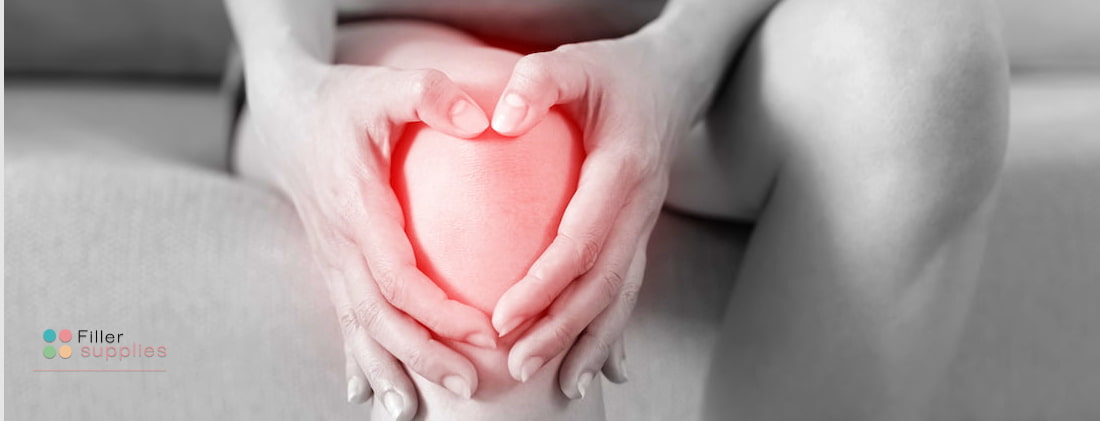Osteoarthritis: Diagnosis and Treatment

Osteoarthritis has become one of the most widespread musculoskeletal and skin diseases and the most common joint diseases, the frequency of which increases with age. Over 10% of the general population on the Earth suffers from joint pain. Among the people aged 65, the number reaches 50%, and if we speak about 75 years old and up – it is almost 80%.
Osteoarthritis is based on the defeat of all components of the joint, primarily the cartilage, as well as the peri-cartilaginous area of the bone, ligaments, capsule, periarticular muscles.
With such impressive numbers, it is important to understand rheumatoid arthritis, its symptoms, and treatment to prevent further development of the disease of the affected joint and live a full and active life.
The Reasons for Osteoarthritis
There may be various causes of osteoarthritis pain in the joints. Here are some of them:
- Mechanical overload (excessive weight, carrying weights, work peculiarities (prolonged stay on the legs).
- Genetic factors: The role of type II collagen gene defects is discussed.
- Deficiency of female sex hormones – estrogens in postmenopausal women.
- Acquired diseases of bones and joints.
- Joint injury.
- Joint operations.
Osteoarthritis Mechanism of Development
The joints are covered with hyaline cartilage, which ensures the perfect sliding of the articular surfaces. Cartilage consists of building chondrocyte cells, intercellular substances (in which chondrocytes are located), and collagen fibers. Cartilage has 2 main functions:
- reducing the load when moving (walking, running, bending the joint, etc.);
- reducing friction between bones.
In turn, the cartilage is covered with a synovial membrane, which provides protection and reliable “grip”. The synovial membrane performs an important function of filtering the building material of cartilage – hyaluronic acid. It prevents the latter from being washed out of the joint cavity. Violation of the biochemical composition of the synovial fluid in trauma or inflammation of the joint actually leads to the development of a disease called osteoarthritis. The synovial membrane secretes synovial fluid, which has 2 important functions:
- provides nutrition;
- serves as a lubricant between cartilages to reduce friction.
In patients with osteoarthritis, the production of synovial fluid components – glucosamine – decreases. Due to the lack of nutrition, cartilage loses its elasticity, cracks appear, erosion, gradual thinning of the cartilage until it disappears. The joint gap is reduced. All these changes lead to osteoarthritis pain and difficulty in movement in the joints.
Osteoarthritis Symptoms
Osteoarthritis is characterized by a mechanical type of pain – increased pain after physical exertion and subsided during a period of night rest. Constant pain, especially at night at rest, usually develops with severe, advanced joint damage. They are caused by stagnation of venous blood and increased intraosseous pressure.
Often, patients are worried about the so-called “starting” pain, more often with osteoarthritis of the knee joints. It occurs after a long rest (first steps in the morning) and passes quickly. Starting joint pain is caused by friction of the articular surfaces, on which detritus settles – fragments of cartilaginous and bone destruction. At the first movements in the joint, detritus is pushed into the turns of the joint capsule, and the pain is significantly reduced or stopped completely.
A serious complication of osteoarthritis is the so-called “blockage of the joint” (usually the knee) – the appearance of acute pain in the joint, the inability to move in it. The reason for this phenomenon is the appearance of the so-called “Articular mouse” – by pinching the cartilaginous fragment between the articular surfaces. In the presence of joint inflammation, in addition to pain in the joint, both during movement and at rest, morning stiffness, swelling of the joint, and a local increase in skin temperature are characteristic.
With osteoarthritis, deformity and stiffness of the joints gradually develop.
The knee joint, small joints of the hands, hip joints are most often affected.
Diagnosis of Osteoarthritis
In addition to interviewing the patient, examining, assessing joint mobility and pain, the physical therapist will need blood test results and X-ray data (sometimes MRI can be used instead of X-ray) of the most affected joints. Complex examinations such as bone scintigraphy and osteodensitometry are also available in many medical centers, the results of which may be useful in individual cases.
The specialists talk about all the nuances of diagnosis and treatment in the most detailed and open manner at the receptions to the patient and, if necessary, to close relatives.
For a long time, osteoarthritis was not classified as an inflammatory disease, but in recent years the medical community has come to a consensus that, due to joint destruction not only to the cartilage but also to the adjacent bone, an inflammatory process can begin in the body.
Therefore, for effective treatment, the doctor must accurately determine the current state of the patient, exclude other possible diseases and find out if there is an inflammatory process.
Osteoarthritis Treatments
They are available 3 variants to relieve osteoarthritis symptoms: non-drug, drug, and operational.
Non-drug pain-relief treatment includes physical therapy, weight loss (if overweight is present), the use of additional devices (for example, canes) to reduce the load on the painful joint, physiotherapy exercises. Treatment of osteoarthritis requires an integrated approach and a responsible attitude on the part of the patient because with a mild form of joint degeneration, new useful habits will help:
- do not stay in one position for too long;
- add light loads every day and/or eliminate excessive loads;
- check your shoes (if the disease has invaded the joints of the legs);
- balance nutrition.
Medicinal (conservative) treatment to reduce pain in the joint is extremely diverse, it includes not only anesthesia, anti-inflammatory therapy (if inflammation is present), but also various combinations for intra-articular, intramuscular administration, designed to support the regeneration of cartilage tissues. Intra-articular and periarticular administration of glucocorticoid drugs and hyaluronic acid preparations is successfully used.
Surgical treatment to relieve pain is used for significant changes in the joint – the doctor may recommend joint replacement or arthroscopic intervention. Endoprosthetics is widely used in our time, but you should still carefully select a center to provide such a service. Indeed, the prognosis for the patient’s quality of life depends on the experience of the team of specialists, as well as on their joint well-coordinated work.
The Bottom Line
Unfortunately, once osteoarthritis has attacked the joints, it is impossible to stop the process and completely heal the affected joint. However, we live in the times of advanced technologies and medicine that allow greatly improve the quality of life even for patients with deadly incurable diseases.
In the same way, diagnose osteoarthritis is not a death sentence. There are multiple treatments and therapies to decrease pain, even severe pain and chronic pain in the joints, returning the mobility to your knees and hips and giving you the possibility to live a full and active life!
Contact your doctor regarding the most appropriate treatment to relieve pain in your case and stay healthy.

